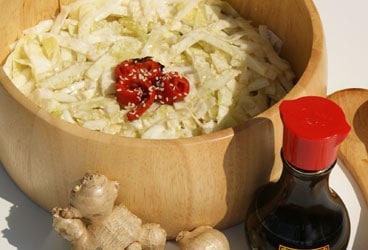
Cabbage Stew 368
The best piece of advice I ever got for stocking a galley is this: Everybody eats. Yes, with the exceptions of leggy supermodels and photosynthesizing plants, everyone you meet in your sailing travels will consume food. So it doesn’t make a whole lot of sense to weigh down your boat with six tons of rice, beans, spaghetti, and the other stores that people readily have on hand all over the world.
However, as adventurous as you may be, you may not want to partake of every local specialty. Consider, for example, the Polynesian sea urchin, a sort of disembodied spleen on a plate. Frankly, there isn’t enough rum in the world to make me consume it willingly. I’d rather eat a fiberglass sandwich. So when outfitting your galley for the culinary demands of long-distance cruising, there are a few items you simply must have on hand:
Wine: The fruit of the vine is necessary for marinating the unidentifiable hunk of mystery meat sold to you by your tropical-island butcher. Beef, goat, and muskrat all respond well to a red-wine marinade. Add enough garlic and you won’t even need to think about it.
Pressure cooker: Once your mystery meat has marinated long enough for you to convince yourself that it came from a cow, cook it-marinade and all-in the pressure cooker. Maybe add some onions, potatoes, and the vegetables you have on hand. Mmmm: Muskrat Bourguignon, a true sailor’s delight.
Tupperware bowls with lids: It’s all very well to talk about chopping veggies on board, but what do you do when the boat lurches sideways and sprays your chopped vegetables like shrapnel across the cabin sole? Here’s what you do: When you finish prepping each ingredient, seal it in a little Tupperware bowl. If it shoots across the galley, it may break your nose, but nothing will spill.
Aluminum foil: It’s a mystery of the universe, but carrots wrapped in aluminum foil will keep for weeks, even without refrigeration. Their unwrapped brethren may expire in pools of poisonous slime, but “robot carrots” mysteriously live on.
A mandoline: This grater is a must-have kitchen doodad to quickly and efficiently make paper-thin slices of cabbage, carrot, red onion, green apple, and fingers. Seriously, you don’t encounter much lettuce in the tropics, so if you like foods that crunch, you’ll be eating many shredded salads. Don’t buy one of those complicated French ones for US$250-a plastic model from Japan costs less than US$20.
A well-stocked spice rack: Barry, the first shipboard chef I met, was a wizened husk of a man. Though his spice rack was loaded with all manner of exotic roots and powders, he recommended rum for, as he says, “when your cookin’ isn’t goin’ so good.” Take it from Barry. Chilies, cumin, curry, and Captain Morgan-you never know what you’ll need to drown that sea urchin.
Cabbage: Yes, you will eat it. And you will like it. Canned, frozen, or pressure-cooked, most of the food a sailor eats on a passage has the texture of geriatric oatmeal. Cabbage, on the other hand, keeps forever, is full of vitamins, and can be sliced thinly, then made extra-crunchy with a fresh water bath. You can even toss it with this gutsy ginger dressing and pretend it’s delicious.
Cabbage Salad with Asian Dressing
3 tablespoons sesame oil
6 tablespoons olive oil
2 tablespoons rice vinegar
2 tablespoons brown sugar
1 teaspoon soy sauce
1 teaspoon fresh ginger, grated
1 small head cabbage, shredded
Whisk together dressing ingredients and toss over the shredded cabbage. Add any combination of fresh vegetables you’re lucky enough to have on board. For a main course, add a can of salmon or some garbanzo beans to the mix. This salad is full of vitamins, full of crunch, and it really is delicious!







